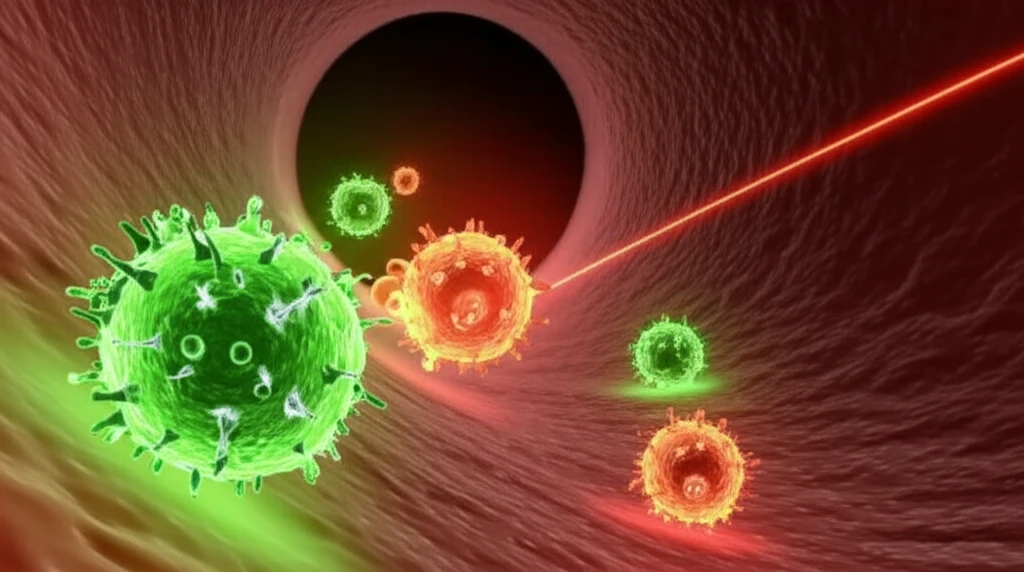
Can a New Blood Test Spot Cancer Earlier? The Promise of 'Liquid Biopsies'
"Researchers are developing innovative methods to detect and analyze circulating tumor cells, potentially revolutionizing cancer diagnostics and treatment monitoring."
For decades, the fight against cancer has centered on early detection. The sooner cancer is identified, the better the chances of successful treatment and survival. While traditional methods like imaging and biopsies have been crucial, they often detect cancer at later stages. Now, a groundbreaking approach is emerging that promises to revolutionize cancer diagnostics: the "liquid biopsy."
Liquid biopsies involve analyzing circulating tumor cells (CTCs) in the bloodstream. These cells, shed from primary tumors, hold vital clues about the cancer’s characteristics and stage. Detecting and analyzing CTCs could provide a non-invasive way to monitor cancer progression, assess treatment effectiveness, and even predict recurrence.
Recent advancements in in vivo flow cytometry are significantly enhancing the capabilities of liquid biopsies. This sophisticated technique allows real-time identification and enumeration of apoptotic (dying) CTCs directly in the blood flow, offering a more dynamic and comprehensive understanding of the disease.
The Science Behind the Breakthrough: How In Vivo Flow Cytometry Works

In vivo flow cytometry represents a significant leap forward in CTC detection. Unlike traditional methods that require drawing blood and analyzing it in a lab, this technique allows for real-time monitoring of cells directly within the bloodstream. Here’s a simplified breakdown:
- Real-Time Monitoring: A laser irradiates circulating objects in the blood flow. This prompts any fluorescent-labeled cells to emit light, which is then detected by a highly sensitive photodetector.
- Targeted Labeling: Researchers use fluorescent tags that specifically bind to cancer cells or markers of apoptosis (cell death). In this study, they used green fluorescent protein (GFP) to identify breast cancer cells (MDA-MB-231) and Annexin-V-RPE, an orange dye, to tag cells undergoing apoptosis.
- Simultaneous Detection: The system can detect multiple fluorescent signals simultaneously, allowing for the differentiation between viable CTCs and apoptotic CTCs. This is crucial because only viable CTCs can create distant metastases.
- High Sensitivity: The technique is highly sensitive, capable of detecting even small numbers of CTCs amidst the vast background of blood cells and tissue. This is vital for early detection and monitoring treatment response.
Future Implications: The Path to Personalized Cancer Care
The development of advanced in vivo flow cytometry techniques holds immense promise for the future of cancer treatment. By providing a real-time, non-invasive method to monitor CTCs and their apoptotic state, this technology can enable more personalized and effective cancer therapies. It can also help oncologists quickly assess treatment response, adjust treatment plans as needed, and ultimately improve patient outcomes. The ability to detect and analyze CTCs in real-time opens new avenues for understanding cancer metastasis and developing targeted therapies to prevent it.
